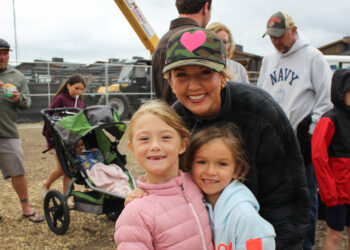By Evelyn Boswell
An international journal based in England has devoted an entire issue to the results of a Montana State University conference on dinosaur eggs and babies.
“Historical Biology” published a special issue in March that contains eight scientific papers from the Fourth International Symposium on Eggs and Babies, held in 2009. Five of the eight papers were authored or co-authored by MSU faculty members and students in the Department of Earth Sciences or the Museum of the Rockies. They were faculty members David Varricchio, Frankie Jackson and Jack Horner; graduate students Michael Knell and Denver Fowler; and undergraduate Lee Hall.
“Being part of a published paper as an undergraduate is a significant accomplishment and requires both a devotion to the subject and a persistence in carrying the project through,” Varricchio said. “It represents an important benchmark in developing one’s career. Several paleontology majors at MSU have published papers, and this reflects the quality of students the program attracts and the community of scholarship that the students generate.”
Varricchio and Jackson edited all eight papers and wrote an introduction for the special issue of “Historical Biology.” Available online at informaworld.com/smpp/title~content=t713717695~db=all, the papers focused on diverse topics related to eggs and babies, including a 75-million-year-old turtle fossil that went through a CT scanner at Bozeman Deaconess Hospital to learn more about the eggs it carried.
Another paper looked at the reproduction and parenting behavior of modern crocodiles to learn about dinosaurs. One paper reported on using insect traces to interpret conditions at dinosaur nesting sites near Choteau. Other papers looked at the development of dinosaur crests, new fossil eggs from New Mexico, a review of dinosaur life histories, and eggshell experiments to help recognize fossil nesting sites. A paper by Fowler and Hall focused on the nest-building behavior of sauropods, a group of plant-eating dinosaurs that includes some of the largest dinosaurs that ever lived.
“That MSU has multiple contributors to this volume is no surprise,” Varricchio said.
Noting Horner’s pioneering research at Egg Mountain in western Montana, Varricchio said Horner discovered the first dinosaur eggs from North America and the first dinosaur embryos known to science there.
“His research emphasized the great potential that field studies can play in elucidating dinosaur reproduction and behavior, and is the reason that I came to study at MSU,” Varricchio said. “So the heavy contribution of MSU people represents an outgrowth of Jack’s work. It was Egg Mountain and Jack’s work that brought the 2009 symposium to Montana.”
Knell, Jackson and two co-authors said their paper gave new details about a turtle fossil found to contain eggs. The fossil was found in 2006 in the Grand Staircase-Escalante National Monument in Kanab, Utah. Another 75-million-year-old turtle fossil that held eggs was discovered previously in Alberta. Both belonged to the genus Adocus.
The newly published paper said the Utah eggs were smaller and their eggshells thinner than the Canadian eggs. The difference may have been because the eggs were at different stages of development. Otherwise, the eggs may have come from different species within the genus Adocus.
Pete Brazaitis from the Yale Peabody Museum of Natural History, and Myrna Watanabe from the Naugatuck Valley Community College in Waterbury, Conn., wrote in their paper that crocodiles around the world have their differences, but they are hard-wired to care for their young.
Jackson said crocodiles might show a level of parental care that would surprise most people.
“We kind of accept it in birds, but we don’t think of it happening in reptiles,” she said.
Varricchio and Jackson said the number of experts on dinosaur eggs and babies is small, but they meet every three years. MSU’s symposium — sponsored in part by Varricchio’s CAREER award from the National Science Foundation — was attended by approximately 40 people from eight countries. It was the first time the group had met in North America. Previous conferences were held in Spain in 1999, France in 2003 and Argentina in 2006. The next conference will be held in Hangzhou, China in 2012.
Varricchio and Jackson said they hope MSU students will be able to participate in the upcoming conference. The students have been studying eggs in that area of China, and MSU is collaborating with the Natural History Museum in Hangzhou.
Evelyn Boswell writes for the MSU news service.
photo: A prehistoric turtle fossil waits for a CT scan at Bozeman Deaconess Hospital in this 2009 photo. Findings about the turtle and other topics related to dinosaur eggs and babies are now featured in an international journal. (MSU photo by Kelly Gorham).













